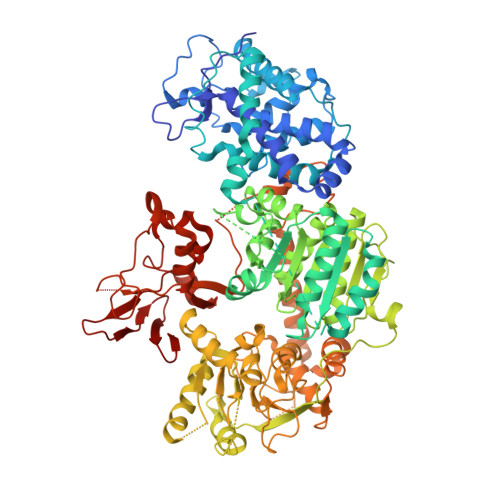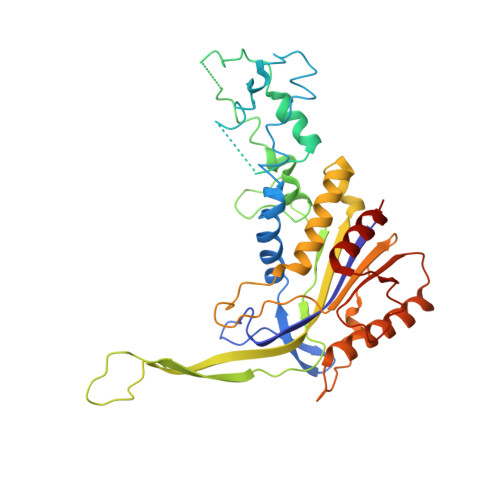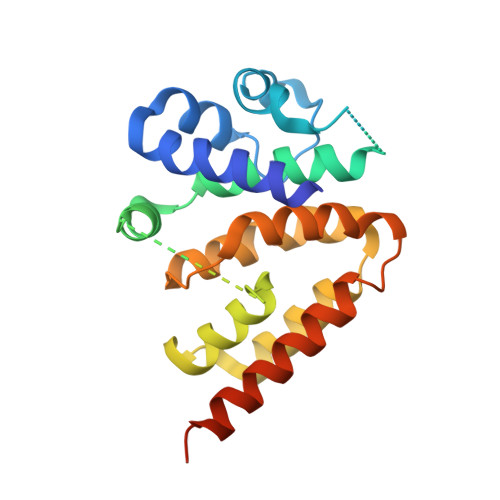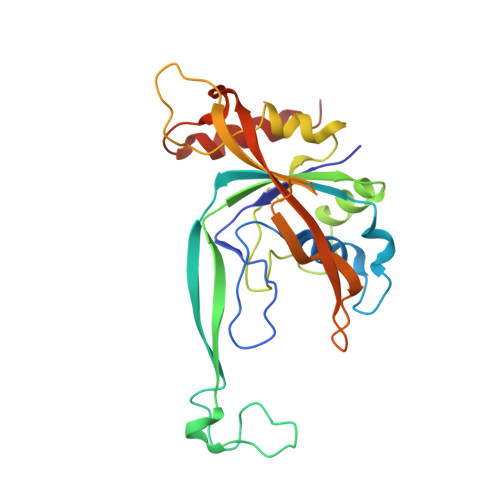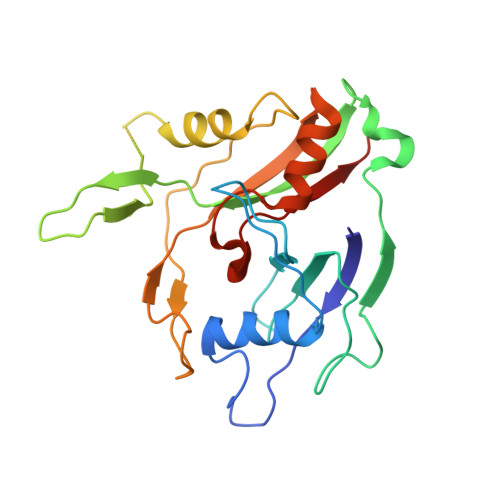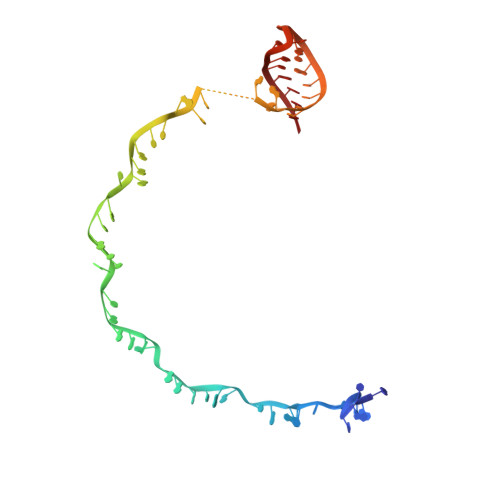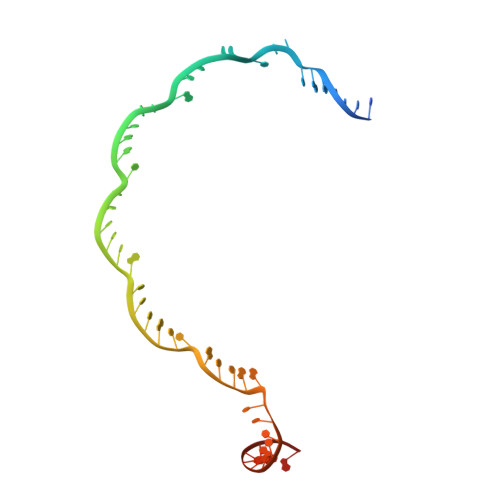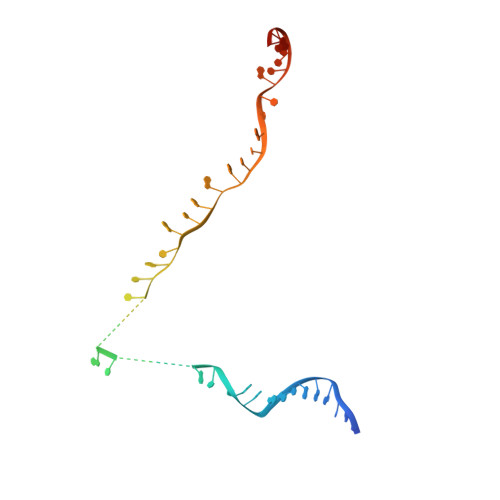Structure basis for RNA-guided DNA degradation by Cascade and Cas3.
Xiao, Y., Luo, M., Dolan, A.E., Liao, M., Ke, A.(2018) Science 361
- PubMed: 29880725
- DOI: https://doi.org/10.1126/science.aat0839
- Primary Citation of Related Structures:
6C66 - PubMed Abstract:
Type I CRISPR-Cas system features a sequential target-searching and degradation process on double-stranded DNA by the RNA-guided Cascade (CRISPR associated complex for antiviral defense) complex and the nuclease-helicase fusion enzyme Cas3, respectively. Here, we present a 3.7-angstrom-resolution cryo-electron microscopy (cryo-EM) structure of the Type I-E Cascade/R-loop/Cas3 complex, poised to initiate DNA degradation. Cas3 distinguishes Cascade conformations and only captures the R-loop-forming Cascade, to avoid cleaving partially complementary targets. Its nuclease domain recruits the nontarget strand (NTS) DNA at a bulged region for the nicking of single-stranded DNA. An additional 4.7-angstrom-resolution cryo-EM structure captures the postnicking state, in which the severed NTS retracts to the helicase entrance, to be threaded for adenosine 5'-triphosphate-dependent processive degradation. These snapshots form the basis for understanding RNA-guided DNA degradation in Type I-E CRISPR-Cas systems.
Organizational Affiliation:
Department of Molecular Biology and Genetics, Cornell University, 253 Biotechnology Building, Ithaca, NY 14853, USA.








